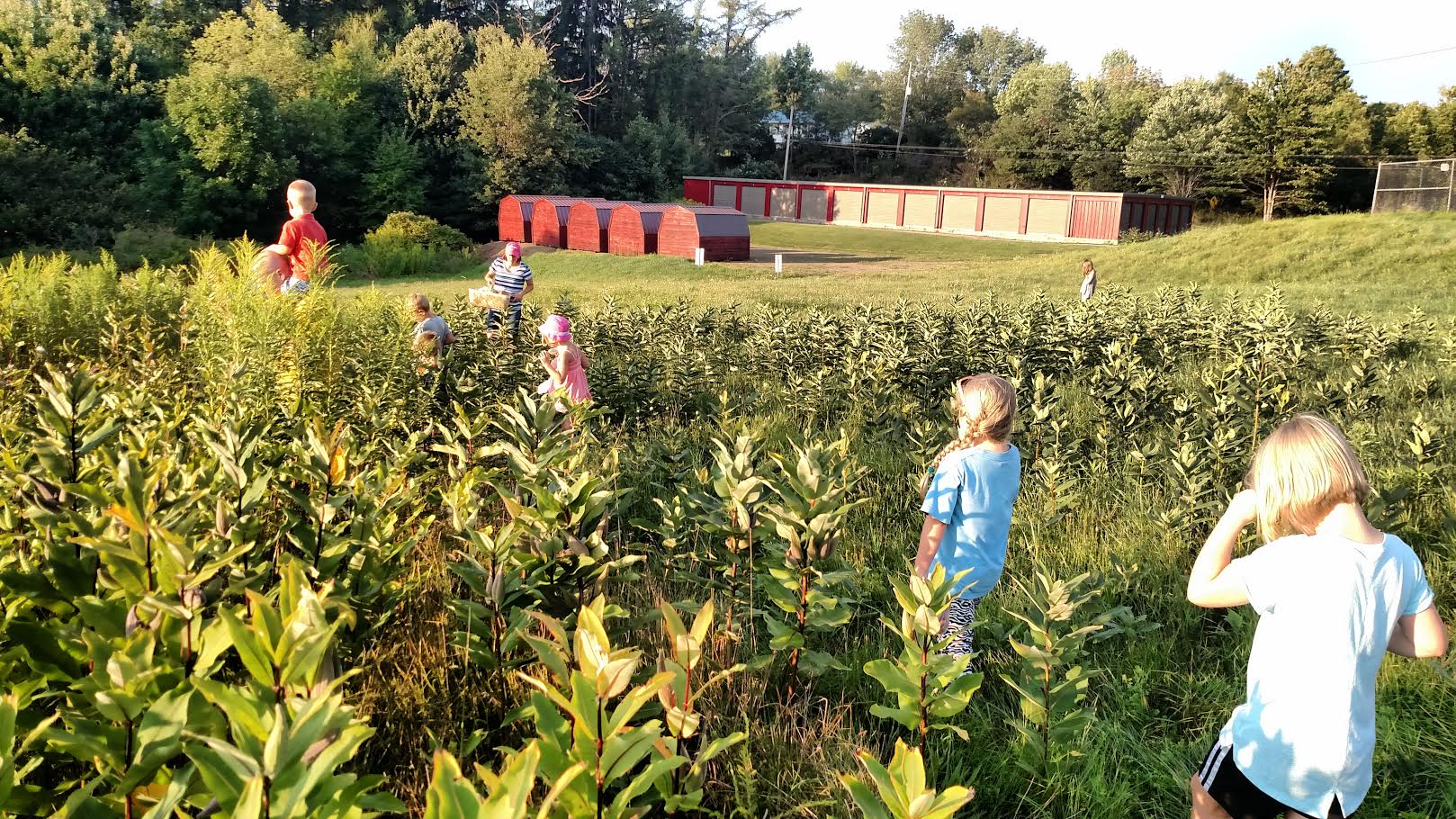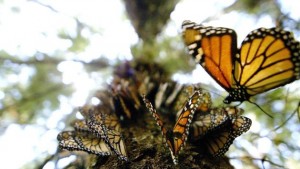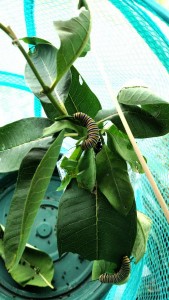The Lazy Bee Monarch Way Station near Dushore in Sullivan County (top) consists of about an acre of milkweed plants that have grown in a purposely un-mowed field. Group tours of the Way Station and information about ways to save the monarch butterfly (above photo by Andrew Winning) are also available.
One of the most iconic butterflies in North America, the monarch, is in desperate decline.
In the 1990s, more than 600 million monarchs made the flight each fall from the northern U.S. and Canada to the forests north of Mexico City, and more than one million overwintered in forested groves on the California coast, according to research.
Now, researchers and citizen scientists estimate that only about 24 million monarchs remain, representing a decline of more than 80 percent across North America. The conservation group Monarch Watch says most of that decline can be blamed on changing land use. But property owners can help shore up the population by setting aside monarch “way stations” filled with milkweed and other nectar-rich plants.
Chip Taylor, an ecology professor at the University of Kansas is the founding director of Monarch Watch, an education, conservation and research group. “We’re not looking at extinction, but the migration could decline to the point at which recovery could take many years – if ever,” Taylor says.
The most effective response is the planting of monarch “way stations” or habitats in non-crop areas – on school grounds, along roadsides and rights of way, in parks, businesses, residential areas or other unused sites, Taylor says. These plots can provide the resources needed to produce successive generations of monarchs and sustain them during their migration.
A few years ago, Karen Black convinced her husband, Claire, to leave part of a hayfield unmowed. That, in turn, allowed the growth of almost an acre of milkweed with several different varieties. This summer, Clair and Karen had their milkweed field certified as a way station and have been giving tours to help people understand the plight of the Monarch.
“Because milkweed is thriving in our way station, our goal is to expand the natural habitat and keep invasive plants and pests to a minimum naturally. No pesticides will be used,” Karen related.
The name of the way station is Lazy Bee Monarch Way Station, and Karen has started a Facebook group by that name to pass along important information to others who are interested in helping the monarch recover.
This is a conservation effort to maintain and rebuild natural habitat for Monarchs. (No flower gardens or butterfly houses are planned). Milkweed is the only plant the monarch caterpillars eat. Without it, no more monarchs.
The Blacks have given a number of tours so far. They are free and feature an educational portion with coloring pages for young and old alike. Volunteers recently went on a Caterpillar Hunt to count and collect what monarch “cats” could be found. Only 10 percent of cats make it to adulthood, so collection efforts greatly increase their chances.
There will be a butterfly release if the timing of hatching works out, Karen noted. Updates will be sent out via the Facebook group Lazy Bee Monarch Way Station.
There will be a collection of seed pods to be sent in to University of Kansas for re-population of milkweed across the country. Any volunteers who help with seed collection this fall will receive free seeds and instructions on how to plant them.
There are mechanical seed separators. The Blacks have blue prints for one and are raising funds to build their first separator this winter.
Also, the migration had already begun from Northern Canada. Monarchs should be passing through our area from Sept. 8 to 20. The peak day is expected to be Friday, Sept. 16. Monarch Watch is asking for everyone to keep a journal of how many monarch butterflies they see each day.
You can email Karen your location and number of butterflies seen to suzuka928@gmail.com or call 570-928-8872 or join the Facebook group Lazy Bee Monarch Way Station.
For more information about monarchs, milkweed and way stations, log on to monarchwatch.org.



It’s really great to see folks who will leave a little bit of land fallow to benefit the wildlife. In the long run, it benefits us all. Kudos to the Blacks for their efforts and especially for teaching others.